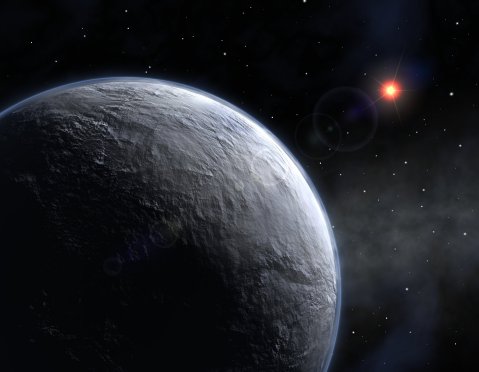Is there life outside planet earth?

Scottish astronomers are leading the way in the search for life outside planet earth.
Combining efforts and resources, researchers in the Scottish Universities Physics Alliance (SUPA) have emerged near the top of the international league when it comes to studying the possibility of life outside our home planet.
This position is recognised by the major international topical astronomy meeting on ‘Cool Stars, stellar systems, and the Sun’ being held in St Andrews this week.
Dr Jane Greaves, reader at the University of St Andrews and co-ordinator of the SUPA Astrobiology Initiative, explained what the Scottish Universities hope to achieve.
She said, “Ultimately, we would like to understand how planet Earth works and how our civilization came into being. It is however the study of other worlds that holds the key for gaining insight into our own.”
SUPA researchers play leading roles in SuperWASP, the largest and most successful existing ground-based programme to identify and study planets orbiting stars other than the Sun.
The researchers are also pioneering automated robotic searches using the technique of gravitational microlensing in an attempt to discover other worlds. This method is able to yield the abundance of planets of Earth mass and below within the Milky Way, as well as of planetary systems similar to our own. These efforts have recently featured at the 2008 Royal Society Summer Science Exhibition.
In order to see planets forming in their embryonic phases and to conduct related laboratory experiments that could model the underlying processes, the SUPA team were given major allocations of time at cutting-edge instruments for their groundbreaking research.
These include NASA’s Spitzer satellite, ESA’s Herschel satellite, the Japanese AKARI satellite, the James Clerk Maxwell Telescope (JCMT) on Hawaii, the Nobeyama Radio Observatory, the Institut de Radioastronomie Millimetrique (IRAM), as well as several zero-gravity parabolic flights – equipment worth a total of more than a million pounds.
Such instruments allow the astronomers to keep a keen eye on the stellar nurseries where the chemical processes, that are thought to finally lead to the formation of life, are taking place.
Dr Helen Fraser from the University of Strathclyde said, “In those regions where we see stars and planets forming, we also see a wealth of organic compounds that form the building blocks of life as we know it. These include lots of simple molecules like water and ammonia, carbon dioxide, carbon monoxide, methanol, ethanol, and many other substances based on carbon chemistry.
“Recently, we found ethanol molecules jetting out in the geyser on Saturn’s moon Encaladus; it might be the case that these could relate to primitive methane-using organisms below the surface.”
SUPA intends to maintain its role of excellency by forming and educating the next generation of world leaders in science. This includes the running of a graduate school, where such unique lecture courses as the ‘Science of the Search for Extra-Terrestrial Intelligence’ are taught, as well as offering SUPA prize PhD studentships to only the most promising applicants from around the world.
The Scottish Universities Physics Alliance (SUPA) involves the University of Edinburgh, the University of Glasgow, Heriot Watt University, the University of St Andrews, the University of Strathclyde, and the University of the West of Scotland.
ENDS
NOTE TO EDITORS:
– The SUPA Astrobiology Initiative bundles research carried out at the University of St Andrews, the University of Edinburgh, and the University of Strathclyde.
NOTE TO PICTURE EDITORS:
IMAGES ARE AVAILABLE FROM THE PRESS OFFICE – CONTACTS BELOW.
Issued by the Press Office, University of St Andrews
Contact: Fiona Armstrong, Press Officer on 01334 462530 / 462529, Mobile: 07730 415 015 or Email: [email protected]
Ref: SUPA 210708
View the latest University press releases at www.st-andrews.ac.uk
Category Research